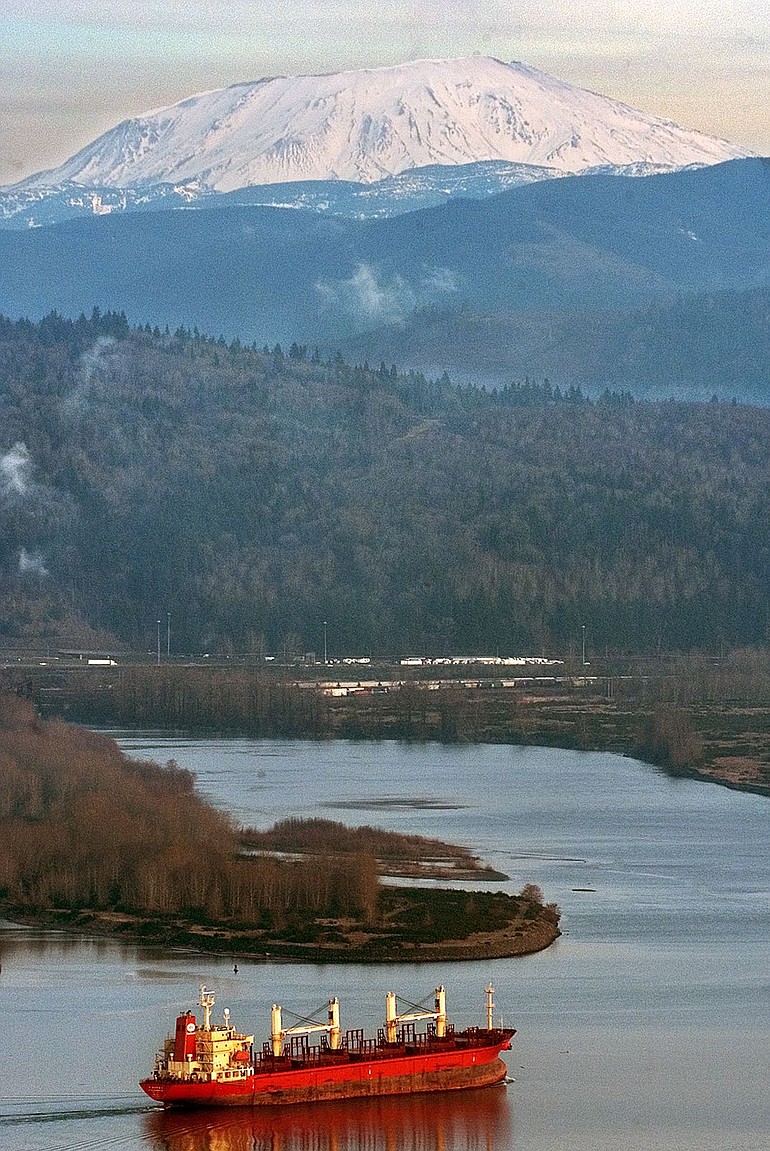The federal government could provide as much as $40 million a year to monitor pollution in the Columbia River and clean it up, under a bill proposed Tuesday.
The Columbia River Restoration Act of 2010, introduced Tuesday in both chambers of Congress represents a substantial boost in federal support for addressing toxic pollution in the great river of the West.
“This is one of the great estuaries, not only of America but of the world,” said U.S. Rep. Brian Baird, D-Vancouver.
However, it also has its share of problems.
The Columbia and its tributaries, draining an area the size of France, have historically served as an industrial workhorse for the benefit of the Pacific Northwest’s economy.
Dozens of hydroelectric dams generate the bulk of the region’s power supply, but the slackwater reservoirs trap a slew of toxic pollutants dating back decades: long-banned industrial solvents such as polychlorinated biphynels, or PCBs, linger in the river with discontinued pesticides such as DDT. The Columbia’s shoreline teems with paper mills, vast swaths of farmland, a notoriously polluted nuclear reservation and hundreds of thousands of people shedding the detritus of modern life — everything from motor oil to soap suds — along its 1,200-mile length.
In recent years, scientists have discovered a new crop of pollutants turning up in the river and in the tissue of fish.
A year ago, the U.S. Environmental Protection Agency issued a report that highlighted new discoveries of chemicals used in personal care products and pharmaceuticals in the river, sediment and fish tissue. Hundreds of these chemicals make their way through wastewater treatment plants ill-equipped to capture them.
“These ’emerging chemical contaminants’ often occur at very low levels,” according to the EPA report. “With improved detection technologies, their widespread distribution in the environment is just now coming to light and raising concern about their potential impacts on fish and shellfish, wildlife and human health.”
Yet, monitoring has been sporadic.
“There’s a lot of data gaps, and the only way to fill those is through a big push by the federal government to come in with an act like this to answer a lot of those questions,” said Brett VandenHeuvel, executive director of the environmental group Columbia Riverkeeper.
Proponents said the new bill would put the Columbia on par with other major water bodies in the country, including Puget Sound, Chesapeake Bay and the Gulf of Mexico. Baird said the Columbia deserves equal consideration.
“Every other major estuary in the country has a specific congressional authorization for efforts to study and remediate damages to the ecosystem,” Baird said, “but this one doesn’t.”
The bill, if enacted into law, authorizes spending $40 million per year through 2016. Congress would have to appropriate the money separately.
Baird is co-sponsoring the bill introduced by Rep. Earl Blumen-auer, D-Ore.
Sen. Jeff Merkley, D-Ore., is sponsoring the Senate version of the bill, which will get its first hearing today before the Senate’s Environment and Public Works Committee.
The money would be a significant boost over the roughly $600,000 in annual federal funding provided in recent years to the bistate Lower Columbia River Estuary Partnership, said Debrah Marriott, the partnership’s director.
She noted that Congress provided more than $400 million in funding for the Great Lakes during the current fiscal year, along with $50 million for Puget Sound and $40 million for Chesapeake Bay.
“You can see the scale is not consistent,” Marriott said.
With new resources, she said, the EPA and the estuary partnership can establish a network of monitoring sites where pollution can be tracked consistently, “so we can see exactly what’s in the river and where it’s moving.”
The vast size of the Columbia River basin means that a cleanup won’t happen overnight, Baird said. The legislation is a starting point.
“The positive news is, there’s still a lot of strong and resilient areas along the Columbia,” he said. “The challenge is, we want to keep it that way.”
Erik Robinson: 360-735-4551, or erik.robinson@columbian.com.



